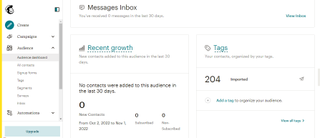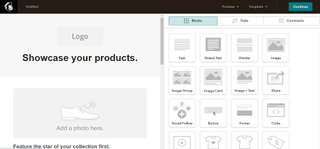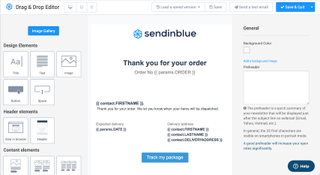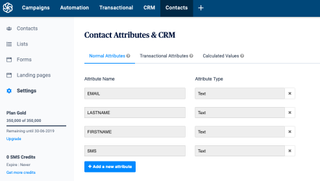Mailchimp vs Sendinblue: 2024 Features Comparison
We compare these leading email marketing platforms

An email marketing tool is one of the best investments you can make for your business. It enables you to reach customers across the globe by sending email messages at the click of a button. Without such a tool, you’ll find it virtually impossible to run email marketing campaigns.
There are endless examples of email marketing software, and two well-known ones are MailChimp and Sendinblue. MailChimp is the most popular email marketing tool globally, with tens of thousands of paying users. Sendinblue is considerably less popular but offers comparable features to MailChimp.
We want to see how MailChimp and Sendinblue stack against each other. We’ll compare them based on critical factors like features, performance, pricing, and customer support. After reading this article, you can see our previous MailChimp review and Sendinblue review for more details about each platform.

Features
MailChimp is a web-based platform that enables you to send email messages to as many addresses on your subscriber list at the click of a button. It can be difficult to create appealing email campaigns, so MailChimp provides a collection of templates designed by professionals that you can tweak to fit your tastes. Otherwise, you can use the platform's drag-and-drop form builder to create your email template from the ground up.
MailChimp offers tools to help you grow your email list. You can create subscription forms on the platform and embed them on your website using HTML code or a plugin (for WordPress sites). This way, any email address added to that form will automatically reflect on your subscriber list. If you already have an existing subscriber list, you can import it into MailChimp as a CSV file and continue sending messages to the addresses as you did before.
Just like MailChimp, Sendinblue offers a collection of templates to help users create effective marketing emails. However, MailChimp offers a broader selection of templates than Sendinblue. Sendinblue lets you create signup forms and embed them on your website to grow your subscriber list. You can also launch Facebook advertisements right from your Sendinblue account to get new subscribers.
Sendinblue differentiates itself from MailChimp by offering tools for SMS marketing. MailChimp offers a similar feature, but Sendinblue’s SMS marketing tools are more sophisticated. Likewise, Sendinblue allows you to set up and deliver automated transaction emails.

Performance
MailChimp is primarily a web-based tool but it offers mobile apps (Android and iOS) that allow users to manage their email campaigns on the go. These apps come in handy if you're at a place where it's inconvenient to use a desktop or PC, e.g., during a commute.
One of the best things about MailChimp is its user-friendliness. The dashboard is organized in a way that makes it easy to find and access the considerable volume of features. It may be confusing to a new user, but MailChimp provides in-app guides to help this cohort of users.
Sendinblue is also primarily a web-based tool. It doesn’t have a mobile app to enable users to monitor their campaigns on the go, which we consider a disadvantage. From our observations, Sendinblue has a very user-friendly and responsive interface, with features neatly arranged on the left side of the dashboard. You’re more likely to enjoy using Sendinblue than MailChimp.

Support
MailChimp provides direct support through email, telephone, or live chat. However, telephone support is only for users subscribed to the most expensive premium plan, while other paid users make do with email and live chat support. MailChimp notably provides direct support to free users for the first 30 days after they sign up.
All users can access the official MailChimp help center, which contains user guides and tutorials covering all the platform's features. There's also an official marketplace where you can find and hire vetted MailChimp experts to aid your marketing efforts.
Sendinblue offers direct support through email and telephone, but the latter is limited to users subscribed to the Business and Enterprise tiers. Telephone support is available from Monday to Friday but not on weekends. If you encounter challenges with Sendinblue, you can also access the official help center for support resources including user guides and tutorials.
We consider MailChimp the superior tool regarding customer support because it offers live chat support to all paid customers, while Sendinblue doesn’t.

Pricing
Both MailChimp and Sendinblue offer free tiers but with limited features. For instance, MailChimp’s free tier is limited to 500 monthly emails, while Sendinblue’s is capped at 300.
MailChimp offers three premium plans; Essentials for $11 / £11 / AUD$16 per month, Standard for $17 / £17 / AUD$25 per month; and Premium for a high $299 / £299 / AUD$499 per month. The price increases depending on the number of contacts you have. For example, 20,000 contacts will cost $189 / £189 / AUD$289 per month for Essentials, $225 / £225 / AUD$345 per month for Standard, and $460 / £460 / AUD$690 per month for Premium.
Sendinblue offers three premium plans; Starter, Business, and Enterprise. The Starter plan starts at $25 / £25 / AUD$40 per month, Business starts at $65 / £65 / AUD$100 per month, and Enterprise starts at $1,000 / £1000 / AUD$1500 per month, with each supporting unlimited contacts. However, the price increases depending on the number of emails you're sending per month, e.g., 100,000 monthly emails will cost $69 / £69 / AUD$99 per month on the Starter plan and $115 / £115 / AUD$175 per month on the Business plan.
All things considered, Sendinblue is a more affordable tool than MailChimp.
Verdict
Choosing between MailChimp and Sendinblue seems tough. Each platform offers a lot of features to enable users to manage their email campaigns with ease. You can find good templates on both platforms, although MailChimp offers a broader selection.
MailChimp offers better customer support, performance, and usability than Sendinblue, so we consider it the better choice. The drawback with MailChimp is that it’s much more expensive than Sendinblue, making it best suited to enterprise customers with big marketing budgets.
Are you a pro? Subscribe to our newsletter
Sign up to the TechRadar Pro newsletter to get all the top news, opinion, features and guidance your business needs to succeed!
Stefan has always been a lover of tech. He graduated with an MSc in geological engineering but soon discovered he had a knack for writing instead. So he decided to combine his newfound and life-long passions to become a technology writer. As a freelance content writer, Stefan can break down complex technological topics, making them easily digestible for the lay audience.

